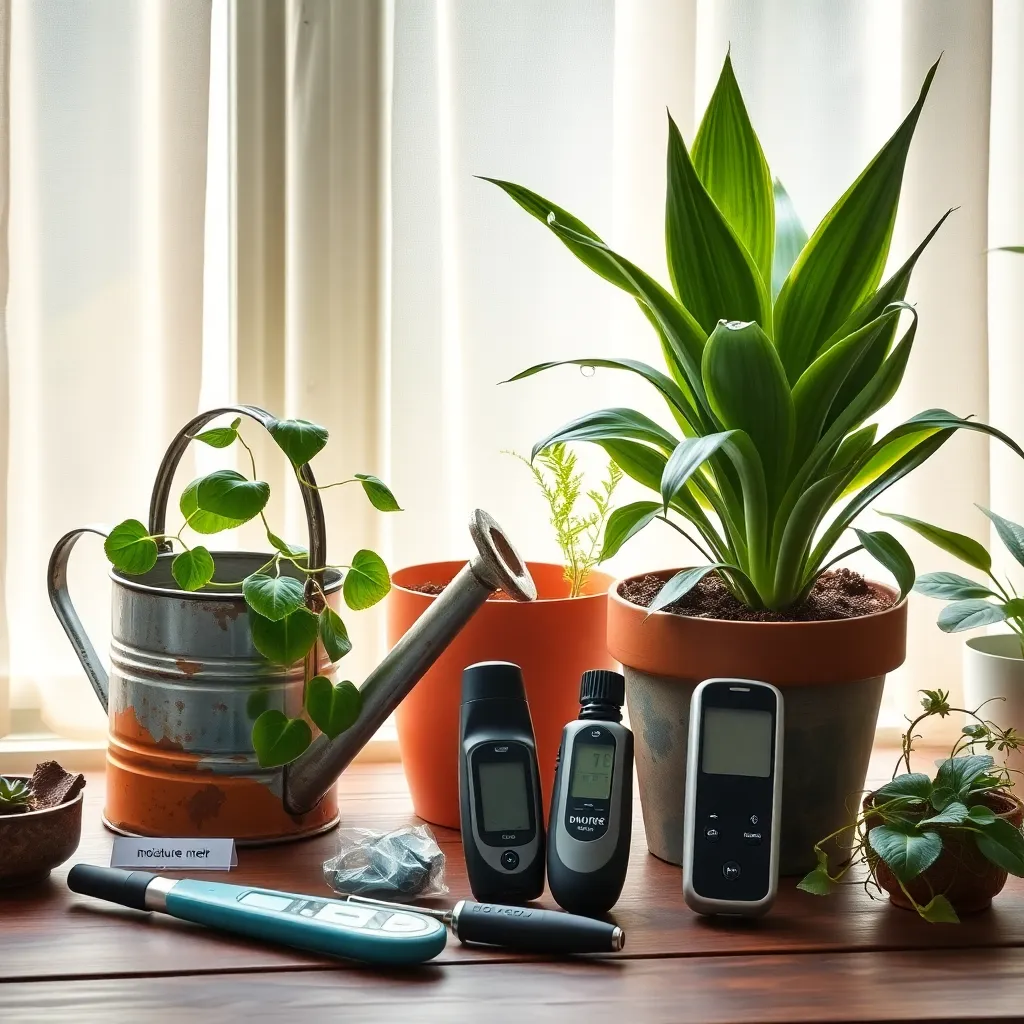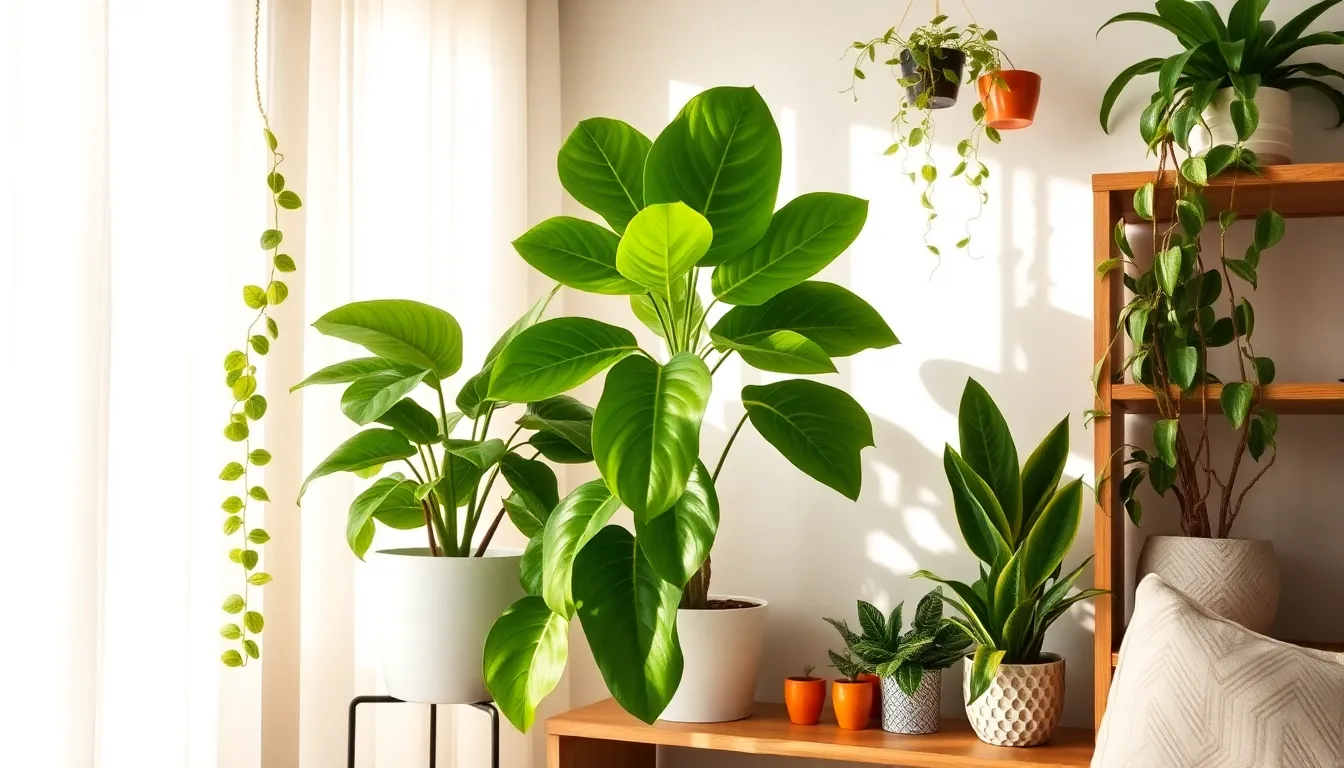Welcoming a touch of nature into your home can transform any space, infusing it with life and freshness that delights both the senses and the soul. Whether you’re just starting your gardening journey or have a seasoned green thumb, “Top 12 Houseplants That Thrive Indoors” is your key to cultivating a flourishing indoor oasis.
Dive into this carefully curated list that celebrates houseplants known not just for their beauty, but for their resilience and adaptability to indoor life. You’ll discover practical tips and insights that will empower you to nurture these botanical beauties with confidence, ensuring they thrive in any room of your home.
From improving air quality to boosting your mood, the benefits of indoor plants are as plentiful as the leaves on a thriving fern. As you turn these pages, prepare to embrace the joy and satisfaction of successful gardening, where every new leaf unfurled is a testament to your growing skills and love for nature.
Spider Plant (Chlorophytum comosum)
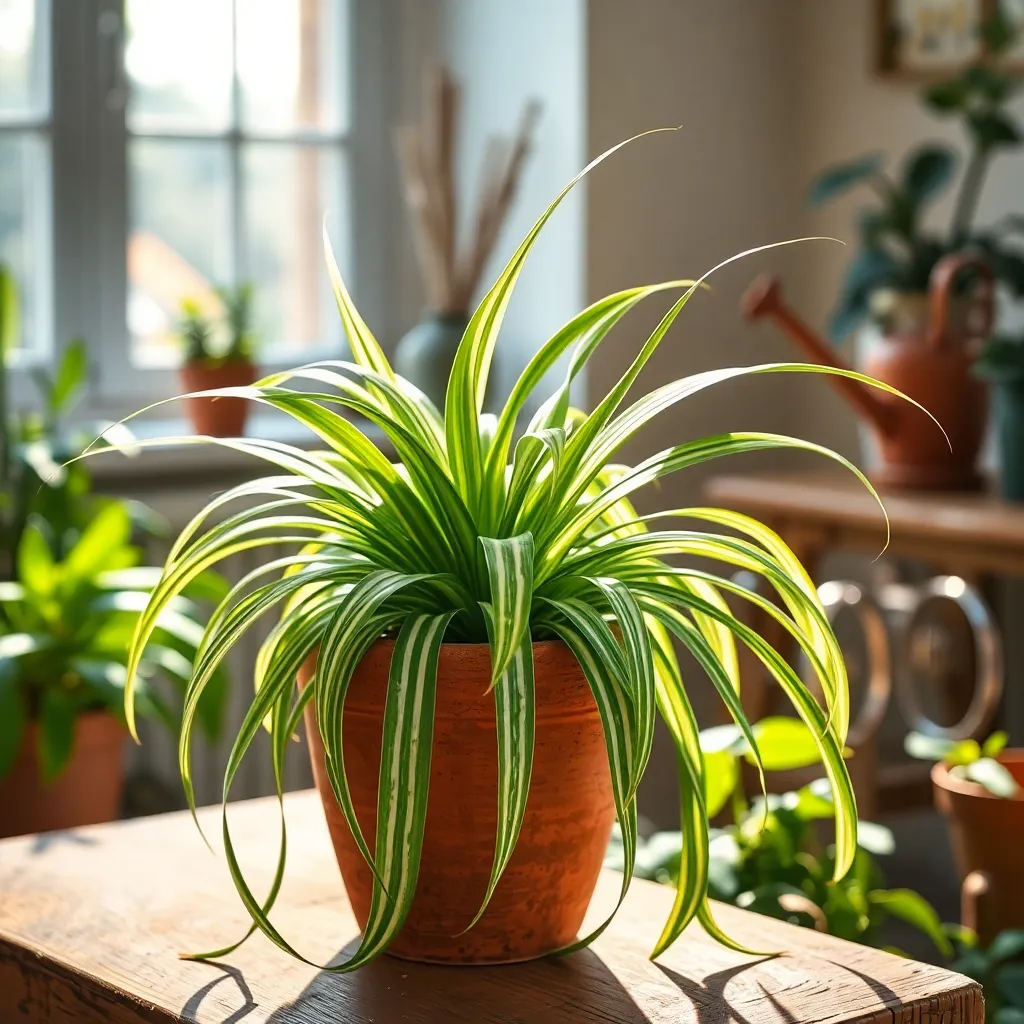
Spider plants (Chlorophytum comosum) are a popular choice for indoor gardening due to their easy-going nature and air-purifying qualities. They thrive in a variety of lighting conditions, making them perfect for spots with indirect sunlight.
To ensure optimal growth, use a well-draining potting mix enriched with organic matter, like peat moss or coco coir. Keep the soil consistently moist but not waterlogged; a good rule of thumb is to water when the top inch of soil feels dry.
For beginners, a monthly feeding with a balanced liquid fertilizer during the growing season will encourage lush foliage. More experienced gardeners can enhance growth by regularly trimming the plant to promote a bushier appearance and removing any brown tips that may develop due to fluoride in water.
To propagate spider plants, simply snip off plantlets that form on the ends of the long stems and place them in soil or water until roots develop. This easy propagation method allows you to expand your indoor garden or share the joy of gardening with friends.
Peace Lily (Spathiphyllum wallisii)

Peace Lily (Spathiphyllum wallisii) is a popular choice for indoor gardening due to its lush foliage and elegant white flowers. Known for its ability to thrive in low-light conditions, it’s an excellent option for rooms with minimal natural light.
To keep your Peace Lily healthy, it’s important to use a well-draining potting mix, such as a peat-based soil. Water your plant weekly, allowing the soil to dry slightly between waterings to prevent root rot.
Avoid placing your Peace Lily in direct sunlight, as this can scorch its leaves. Instead, find a spot with indirect light, which will help it to bloom consistently throughout the year.
For more advanced care, consider misting the leaves regularly to maintain humidity levels, especially during winter months. Fertilize monthly with a balanced houseplant fertilizer to encourage growth and flowering.
Boston Fern (Nephrolepis exaltata)
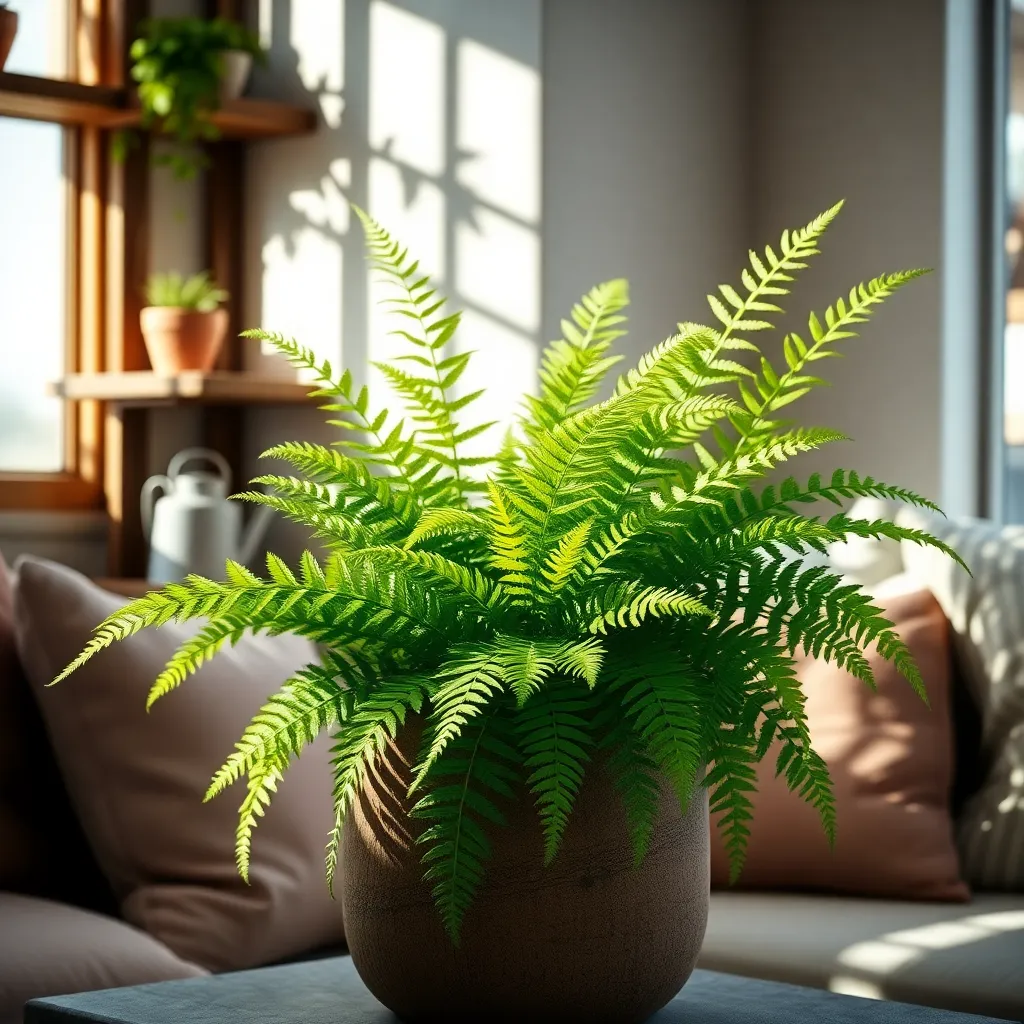
The Boston Fern (Nephrolepis exaltata) is a classic houseplant known for its lush, arching fronds. It’s perfect for adding a touch of greenery to any indoor space, particularly in areas with filtered sunlight.
To thrive, Boston Ferns require high humidity and indirect light, making them ideal for bathrooms or kitchens. Water them thoroughly, ensuring the soil remains consistently moist but not soggy to avoid root rot.
Use a well-draining potting mix enriched with organic matter to keep the roots healthy. Consider adding peat moss or perlite to enhance moisture retention and aeration.
Occasionally, Boston Ferns benefit from a gentle misting to maintain humidity levels, especially in drier indoor environments. For advanced care, fertilize them with a balanced liquid fertilizer every month during the growing season to encourage lush growth.
Fiddle Leaf Fig (Ficus lyrata)

The Fiddle Leaf Fig (Ficus lyrata) is renowned for its large, glossy leaves that add a dramatic touch to any indoor space. This plant thrives in bright, indirect light, making it ideal for rooms with plenty of windows but away from direct sunlight.
To keep your Fiddle Leaf Fig healthy, water when the top inch of soil feels dry to the touch. Overwatering can lead to root rot, so ensure you use a well-draining potting mix and a container with drainage holes.
For optimal growth, consider fertilizing your Fiddle Leaf Fig during the growing season, typically spring and summer. Use a balanced liquid fertilizer every four to six weeks, diluting it to half strength to avoid leaf burn.
Advanced gardeners can shape their Fiddle Leaf Fig with careful pruning to encourage a bushier plant. Prune in spring, cutting above a node or leaf to promote branching and a fuller appearance.
Aloe Vera (Aloe barbadensis miller)
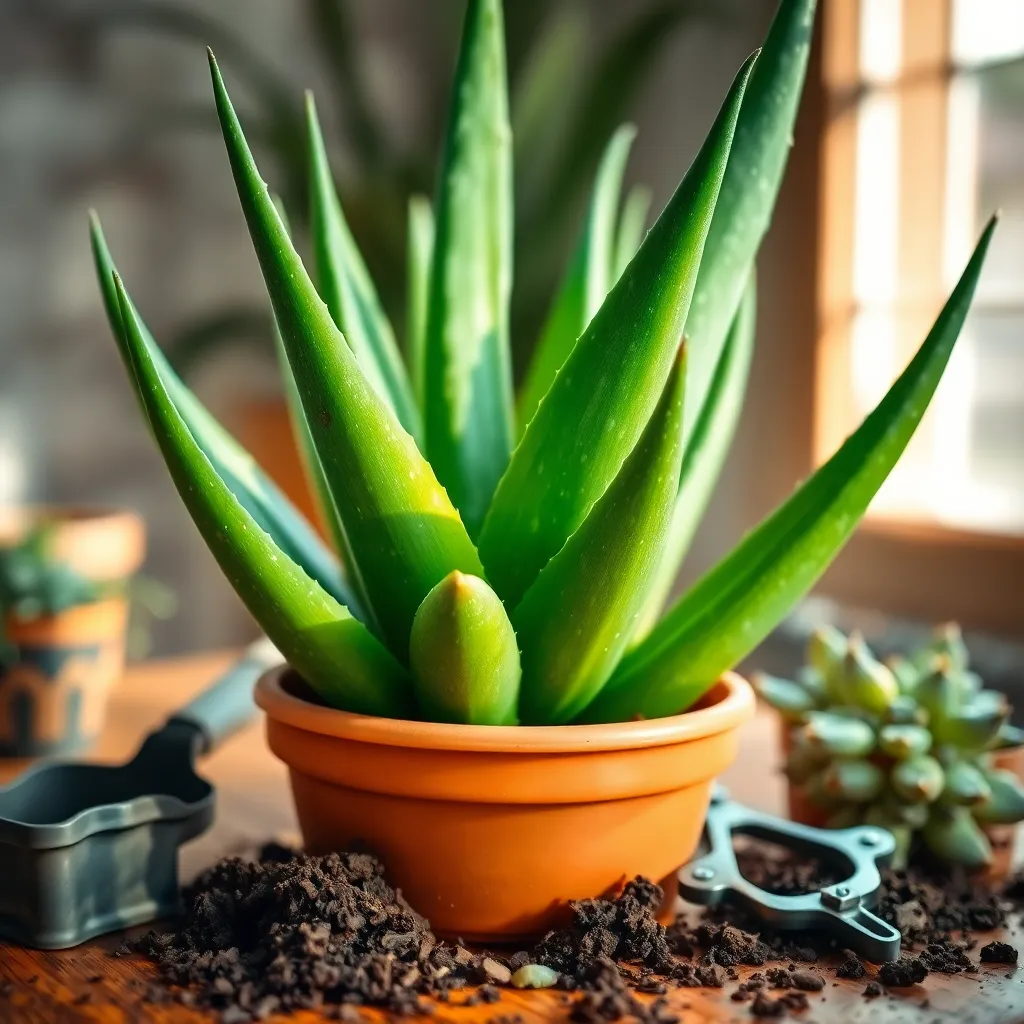
Aloe vera, known for its soothing gel, is an excellent choice for indoor gardening enthusiasts. This succulent thrives in bright, indirect sunlight and prefers well-draining soil, such as a cactus or succulent mix.
When it comes to watering, allow the soil to dry out completely between waterings to prevent root rot. Water sparingly, roughly every three weeks, especially during the cooler months when growth slows down.
For those looking to propagate aloe vera, you’ll find it’s quite simple. Gently remove offsets, or “pups,” from the mother plant when they reach a size of a few inches, and plant them in their own pots.
Advanced gardeners can focus on fertilization, using a diluted liquid fertilizer in spring and summer to encourage healthy growth. Avoid over-fertilizing, as this can harm the plant; once a month is sufficient during the growing season.
Monstera (Monstera deliciosa)
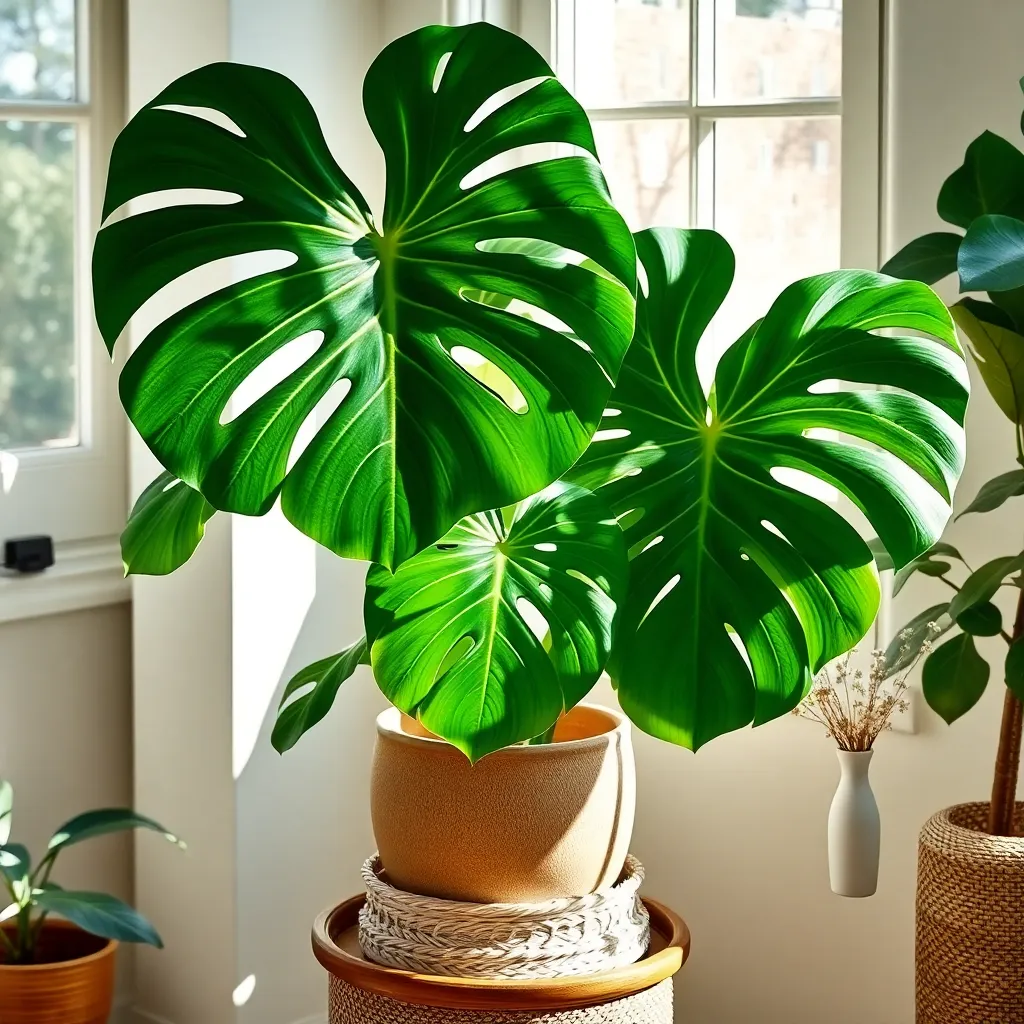
Monstera deliciosa, often known as the Swiss Cheese Plant, is a popular choice for indoor gardening enthusiasts. Its iconic, split leaves add a touch of the tropics to any home, making it a favorite among plant lovers.
To thrive, Monsteras require bright, indirect light, so placing them near an east or west-facing window is ideal. Avoid direct sunlight as it can scorch the leaves, leaving unsightly brown patches.
When it comes to watering, allow the top inch of soil to dry out between waterings to prevent root rot. During the growing season, typically spring and summer, you may need to water your Monstera more frequently, but always check the soil moisture first.
For soil, choose a well-draining potting mix, ideally one containing peat moss and perlite. Consider repotting your Monstera every two years or when you notice roots creeping out of the drainage holes to ensure it has enough space to grow.
Advanced gardeners can encourage larger leaf development by providing a moss pole for the plant to climb, mimicking its natural habitat. Regularly wipe the leaves with a damp cloth to keep them dust-free and allow the plant to photosynthesize efficiently.
Jade Plant (Crassula ovata)
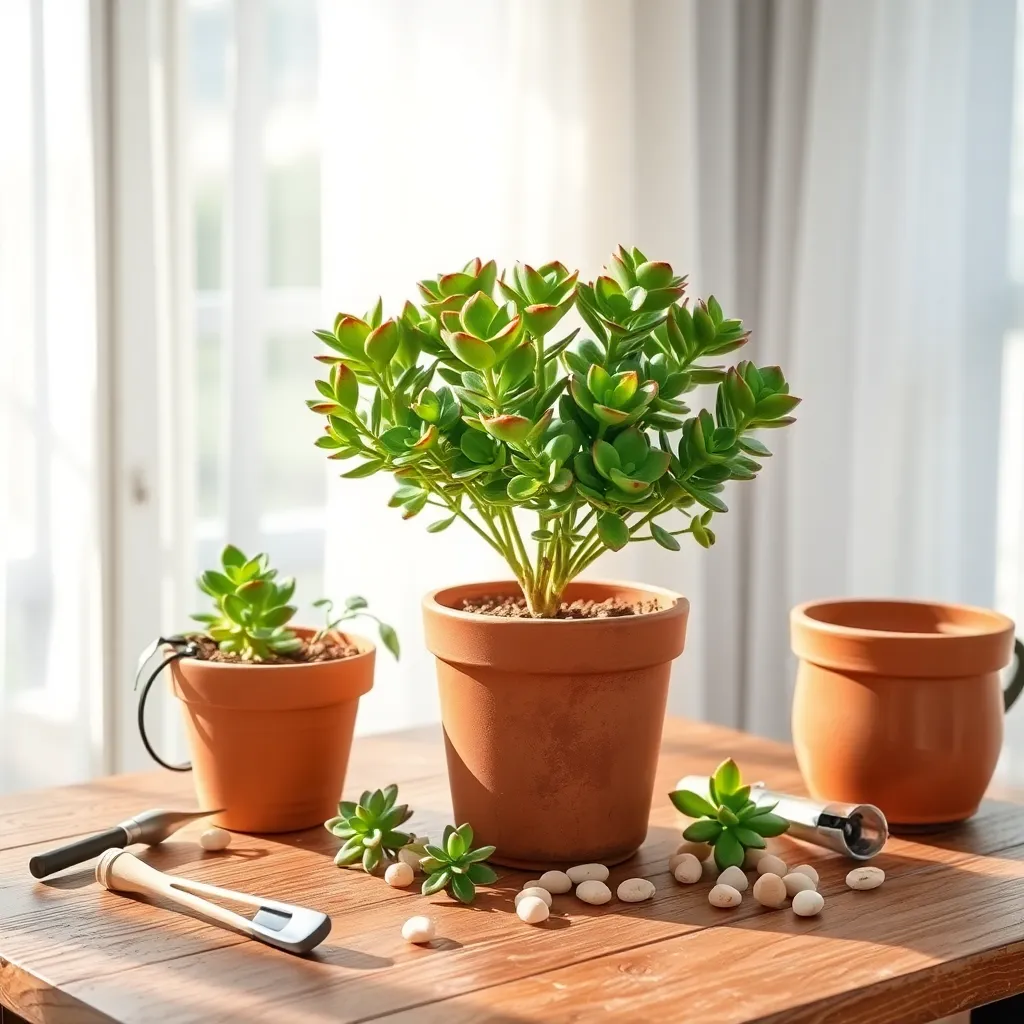
Another favorite among indoor plant enthusiasts is the Jade Plant (Crassula ovata), renowned for its attractive, fleshy leaves and easy care. This succulent thrives in bright, indirect light and can even tolerate some direct sun, making it a versatile choice for various spots in your home.
Watering a jade plant is straightforward as it prefers its soil to dry out completely between waterings. Overwatering is one of the few things that can harm it, so it’s best to water sparingly, especially in the cooler months.
For optimal growth, use a well-draining soil mix, such as one formulated for succulents or cacti. You can create your own mix by combining equal parts of potting soil, coarse sand, and perlite.
To encourage a bushy growth habit, consider pruning your jade plant occasionally. Simply use clean, sharp scissors to trim back leggy branches, which can also help to maintain a desired shape.
Rubber Plant (Ficus elastica)

The Rubber Plant, scientifically known as Ficus elastica, is a popular indoor plant known for its glossy, large leaves that can add a tropical touch to any room. It’s an excellent choice for both novice and seasoned gardeners, thriving in bright, indirect light but can tolerate lower light conditions.
To maintain its lush appearance, water the Rubber Plant when the top inch of soil feels dry, ensuring you do not overwater, as this can lead to root rot. It’s best to use well-draining potting soil, such as a mix of peat, pine bark, and perlite, to keep the plant healthy and vibrant.
Encourage growth by pruning the Rubber Plant in spring, which allows it to maintain a desired shape and size. Fertilize every month during the growing season with a balanced liquid fertilizer to support its development and maintain leaf color.
Dust can accumulate on the leaves, so occasionally wipe them with a damp cloth to enhance their ability to photosynthesize. For those looking to propagate, cut a healthy stem below a node and place it in water or soil, keeping it warm and humid until roots develop.
Chinese Money Plant (Pilea peperomioides)
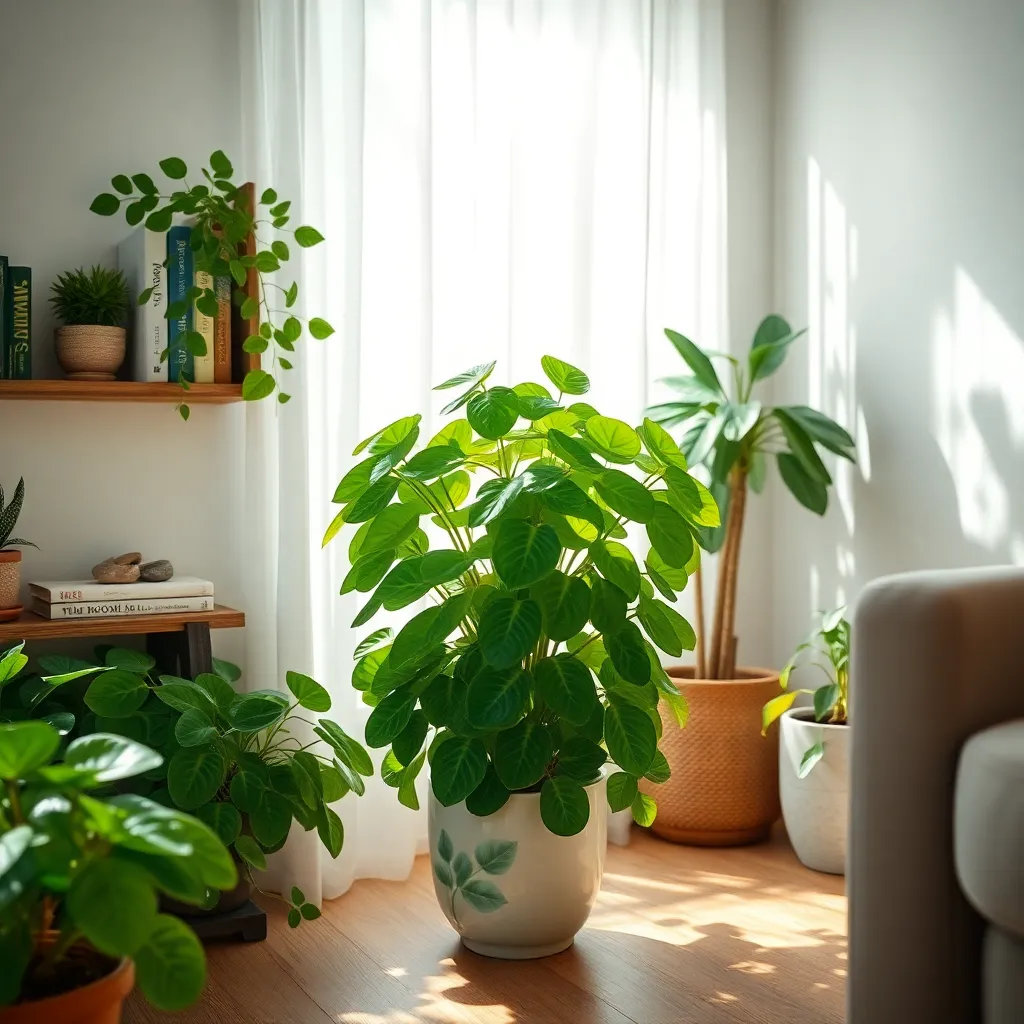
The Chinese Money Plant, also known as Pilea peperomioides, is a popular choice for indoor gardeners due to its unique, round leaves. It thrives in bright, indirect light, making it perfect for a sunny spot away from direct sunlight, such as near an east-facing window.
For optimal growth, plant your Pilea in a well-draining potting mix, such as one designed for succulents. Water sparingly, allowing the top inch of soil to dry out between waterings to prevent root rot, which is a common issue with overwatering.
In terms of temperature, this plant prefers a warm environment, ideally between 60-75°F (15-24°C). Avoid placing it near drafts or sudden temperature changes, as this can stress the plant and affect its health.
Advanced gardeners can encourage bushier growth by regularly rotating the plant to ensure even light exposure. Additionally, removing the small plantlets that appear at the base can help the main plant maintain vigor and allow you to propagate new plants easily.
Bird’s Nest Fern (Asplenium nidus)


Bird’s Nest Ferns are a fantastic choice for indoor gardening due to their unique frond formation and vibrant green color. They thrive in indirect sunlight, making them ideal for rooms with filtered light or north-facing windows.
To care for a Bird’s Nest Fern, keep the soil consistently moist but not waterlogged. Use a well-draining potting mix, such as one designed for orchids or bromeliads, which helps prevent root rot.
Maintaining high humidity is crucial for the health of your fern. Consider placing a humidifier nearby or misting the fronds regularly to mimic their natural rainforest environment.
For more experienced gardeners, propagate Bird’s Nest Ferns by spore collection from mature fronds. Be patient, as this process can be slow, but it’s a rewarding way to expand your indoor plant collection.
Calathea (Calathea orbifolia)
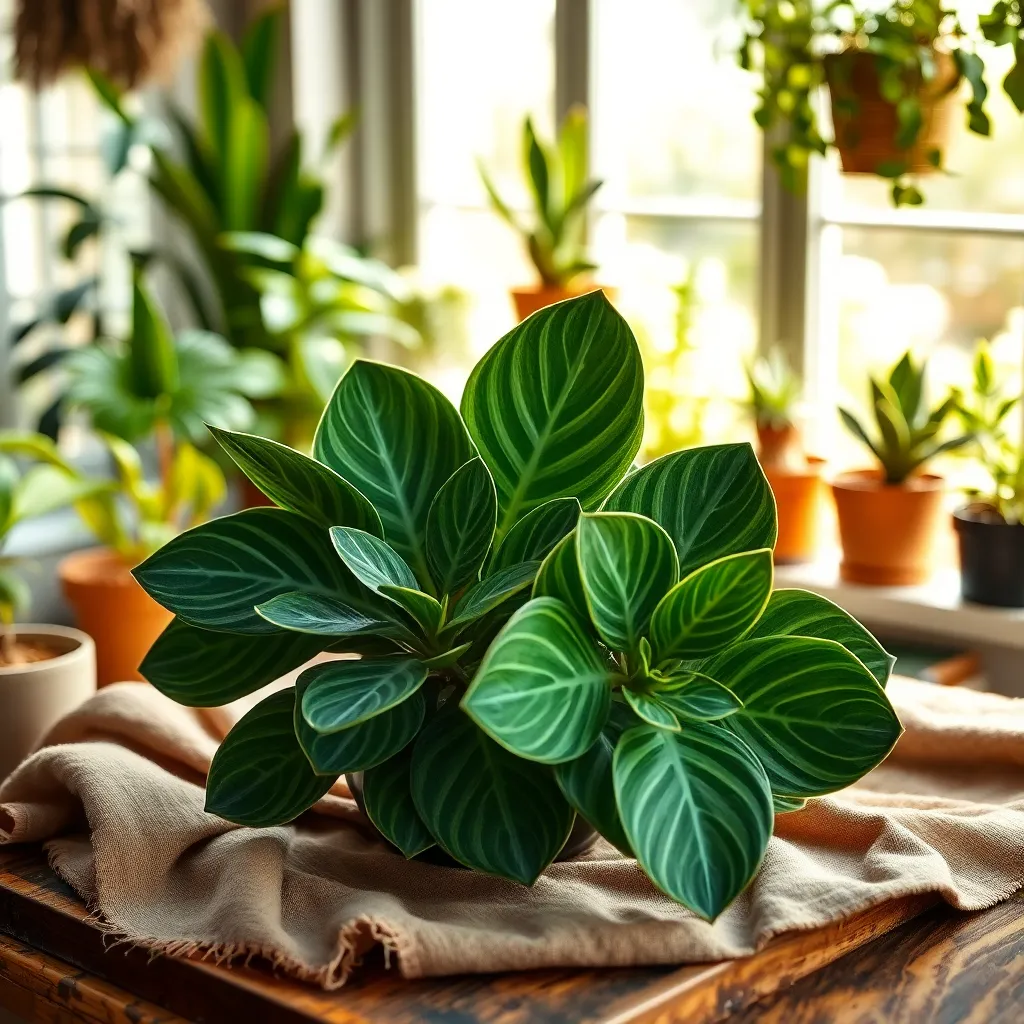
Calathea orbifolia is renowned for its striking, large, round leaves with silver stripes that add a touch of elegance to any indoor space. To thrive, this plant requires specific conditions that mimic its natural tropical habitat.
Ensure that your Calathea orbifolia receives indirect light to prevent its leaves from scorching. Position it near a north or east-facing window where it can enjoy gentle illumination without direct sun exposure.
Maintaining the right humidity is crucial for this plant’s well-being. Aim for a humidity level of around 60% or higher, which can be achieved by using a humidifier or placing a tray of water near the plant.
When it comes to watering, keep the soil consistently moist but never soggy. Use a well-draining potting mix, and water once the top inch of soil feels dry, ensuring excess water drains away to prevent root rot.
For those looking to enhance growth, consider fertilizing your Calathea orbifolia every month during the growing season. Use a balanced, water-soluble fertilizer diluted to half strength, and remember to withhold feeding during the dormant winter months.
Philodendron (Philodendron hederaceum)
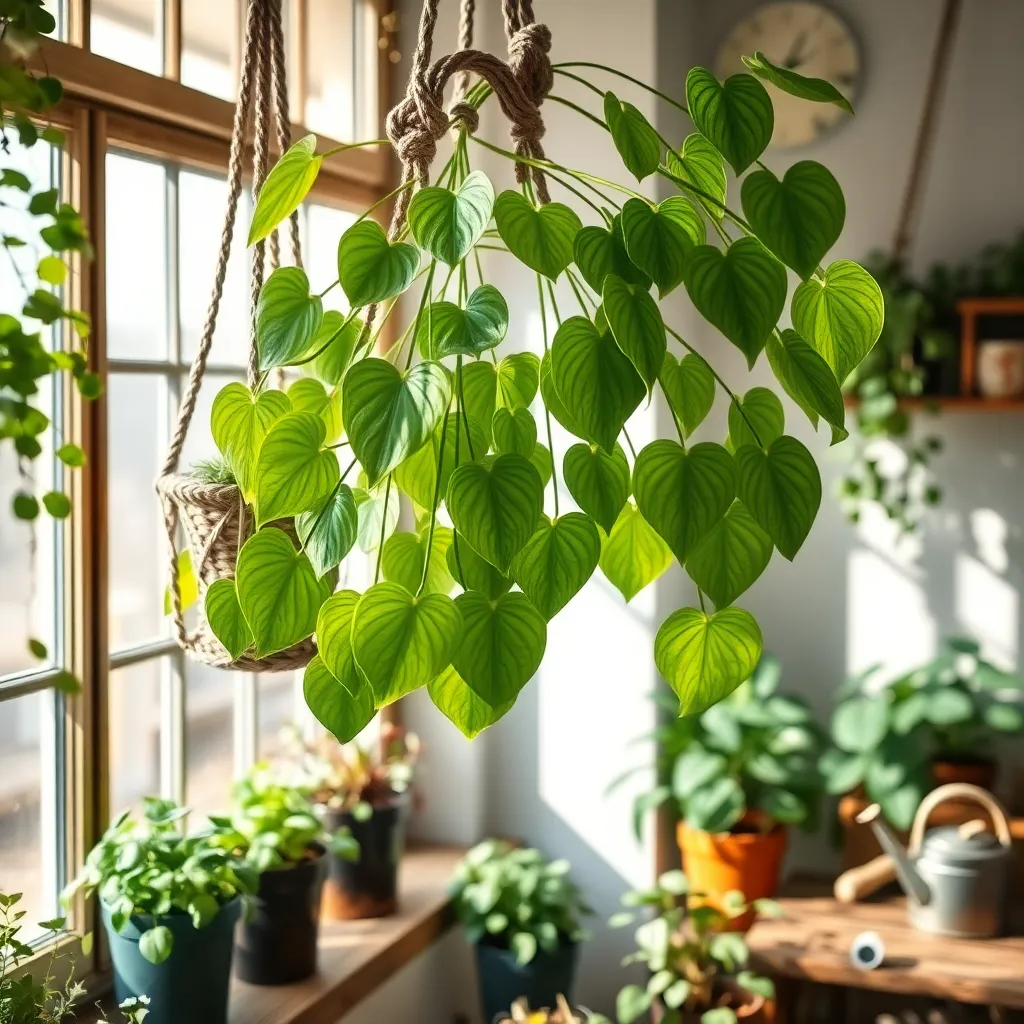
The Philodendron hederaceum, also known as the heartleaf philodendron, is a versatile and low-maintenance houseplant that adapts well to indoor environments. Its lush, trailing vines make it an excellent choice for hanging baskets or shelves, adding greenery to any space.
For optimal growth, place your philodendron in bright, indirect light, though it can tolerate lower light conditions. Avoid direct sunlight, as it can scorch the leaves, and aim to keep the plant in a temperature range of 65-80°F (18-27°C).
Water the plant when the top inch of soil feels dry, keeping the soil consistently moist but not soggy. Using a well-draining potting mix with added perlite ensures that excess moisture can escape, preventing root rot.
To encourage bushier growth, occasionally pinch back the stems just above a leaf node. Fertilize every 4-6 weeks during the growing season with a balanced liquid fertilizer to provide the necessary nutrients for healthy foliage.
Conclusion: Growing Success with These Plants
In exploring the “Top 12 Houseplants That Thrive Indoors,” we’ve unveiled a delightful parallel between nurturing relationships and cultivating indoor greenery. Each plant symbolizes a key concept: communication like the adaptable Spider Plant, trust like the resilient Snake Plant, and patience akin to the slow-growing ZZ Plant. We also highlighted the importance of support, symbolized by the Heartleaf Philodendron, and the joy of shared experiences, much like the cheerful Peace Lily. The nurturing Pothos reminds us of care, while the forgiving Aloe Vera speaks to forgiveness. The steady Rubber Plant echoes commitment, and the ever-blooming Orchid reflects resilience. Meanwhile, the calming Lavender is a nod to understanding, the adaptive Fiddle Leaf Fig to flexibility, and the thriving Succulent to independence.
As you cultivate these relational insights, start today by choosing one plant concept that resonates and reflect on how you can integrate it into your relationships. Bookmark this article as your go-to guide for relationship growth and plant care, ensuring these insights are always at your fingertips.
Remember, just as plants need time and attention to flourish, so do relationships. Embrace these concepts, and watch your connections blossom into lasting success.


